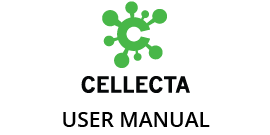Antibiotic selection of transduced cells must be carried out if depletion of non-transduced cells is needed in your experiment. However, it is important to avoid using too high an antibiotic concentration for two reasons: (1) you want to avoid the killing of a sizable fraction of transduced cells, and (2) you do not want to enrich for cells with multiple viral integrants. The general procedure for the selection of the appropriate antibiotic concentration is described in “section 3.2 Calculating a Kill Curve”. If the lentivector carries a fluorescent marker as well (e.g. RFP), the procedure below is recommended:
Determine the optimal concentration of antibiotic by flow cytometry.
- Based on the titer efficiency of your cells (see Assessing Transduction Efficiency by Flow Cytometry or Antibiotic Selection section), set up transduction cell pools using the amount of viral particles that resulted in 20%-50% transduced cells.
- Aliquot same amount of cells in six 12-well wells (~50,000 cells /well).
- Add increasing amount of antibiotic to each well (for puromycin selection, you would typically use a concentration range between 0.1 ug/ml – 10 ug/ml in 2-fold increments). Include a no-antibiotic control well.
- Select the lowest antibiotic concentration that resulted in >90% transduced cells selection, while maintaining the fluorescence intensity of selected and unselected transduced unchanged.
In the example below, the top histogram is the cells transduced at MOI ~0.3, unselected; the middle histogram is the transduced cells selected with an antibiotic concentration which resulted in the enrichment of transduced cells to ~90%, without affecting RFP intensity; the bottom histogram is the transduced cells selected with an antibiotic concentration which resulted in the enrichment of transduced cells to ~99%, but also increased RFP intensity (at the expense of library representation).
Need more help with this?
Contact Us


